This post may contain affiliate links. Please see our disclosure policy.
Canning strawberry juice is a delicious way to preserve a bumper crop of strawberries, and it’s perfect for adding amazing strawberry flavor to drinks and desserts later (without the seeds).

Sometimes the strawberry harvests just keep coming, seemingly without end. At this point in the season, your freezer is full, and you’ve already canned whole strawberries, old-fashioned strawberry jam, and a few jars of seedless strawberry jelly for the kids.
You’ve even put up a few jars of home-canned strawberry pie filling, and you’re starting to think about maybe even making a batch of strawberry wine.
And still, the strawberries keep coming!
That’s when it’s time to can strawberry juice for an extra special treat. You really need a lot of strawberries for this, but it is truly amazing.
Home-canned strawberry juice is incredibly flavorful, and it’s perfect for making mixed drinks. My kids especially love it as a base for a strawberry soda, made simply with strawberry juice and a bit of seltzer (no added sugar needed, strawberry juice is plenty sweet).
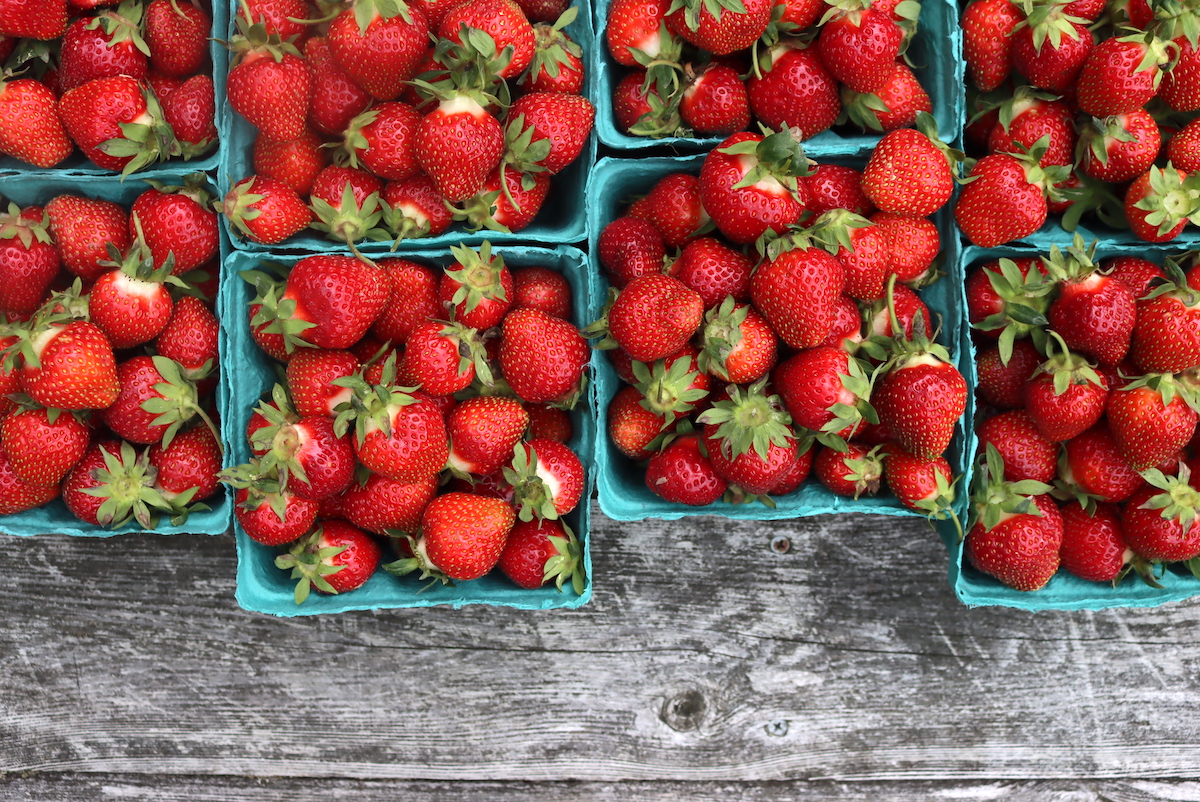
Making Strawberry Juice
If you happen to have a countertop juicer, you could use that, but I don’t think they extract quite as much depth of flavor as when you use the stovetop (or a steam juicer). The main benefit to that type of juicer is that it keeps the juice raw, but we’re canning here…so it’s not necessary.
Start by removing the strawberry tops, and then place the fruit in a saucepan with a bit of water.
Simmer the strawberries, mashing them occasionally with a potato masher, until they’ve released their juice and completely fallen apart. This happens quickly, and you should only cook them for about 5 to 10 minutes.
Strain the pulp through a jelly bag, or a fine-mesh strainer lined with a double layer of dampened cheesecloth.

Strawberry Juice Yield
A quart of strawberries, as harvested or purchased, will yield about 1 cup of strawberry juice.
For every cup of strawberry juice, you’ll need 3 1/4 to 3 1/2 cups of chopped strawberries (from 1 quart whole) and 1/2 cup water. Cook the mixture for 5 to 10 minutes, and once strained you should have 1 cup of strawberry juice.
There is, of course, some variation in how juicy different strawberry types are. Homegrown fresh eating strawberries that are very tender also have more juice than the long shipping clamshells you get at the store.
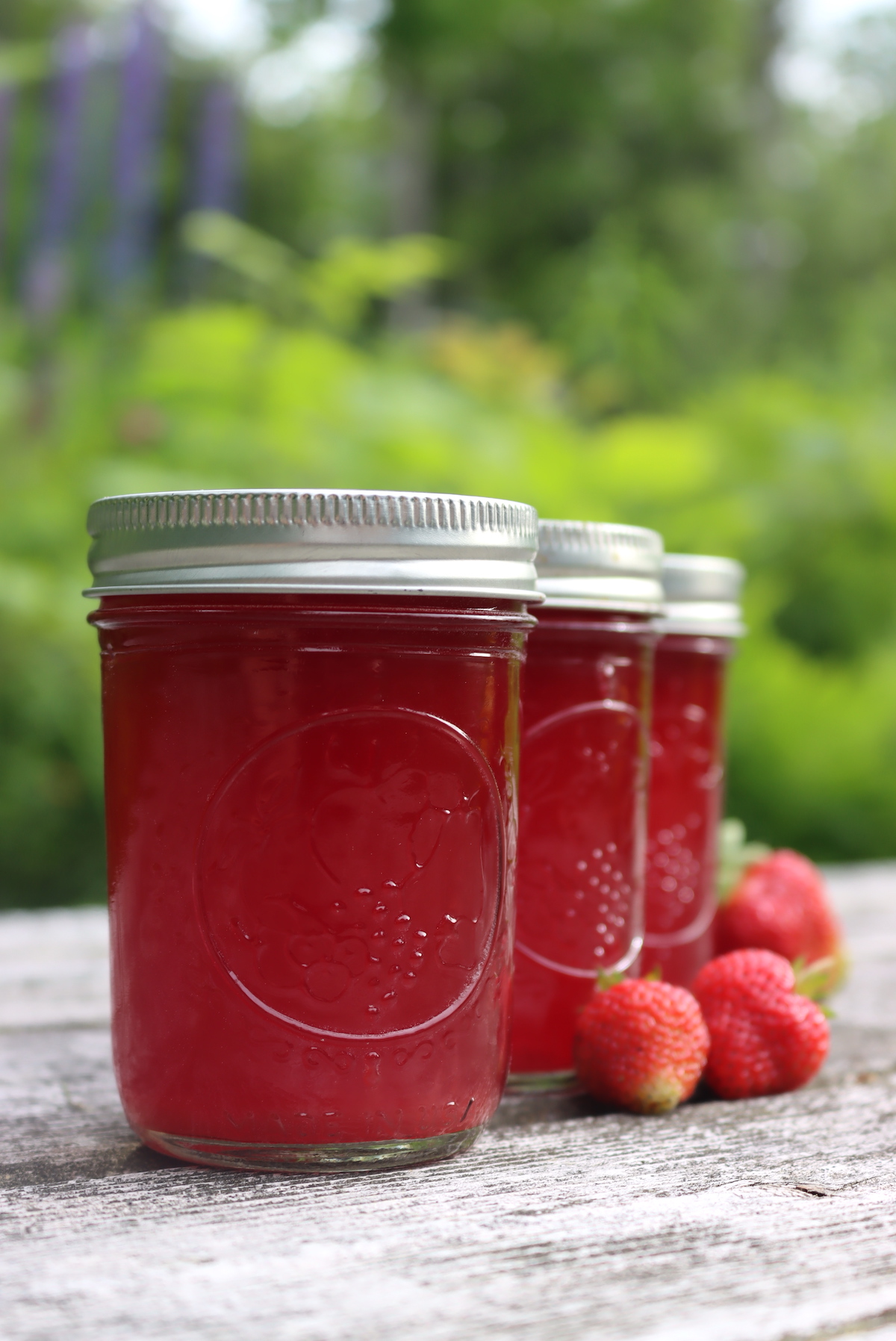
Canning Strawberry Juice
Now that you have your strawberry juice filtered and ready to go, it’s time for canning. If you’re not familiar with canning, please read my beginner’s guide to water bath canning before beginning.
These canning instructions for strawberry juice come from the “Canning Berry Juice“ recipe on page 189 of The Ball Complete Book of Home Preserving. You can use this same recipe with any berry juice, including blackberries, blueberries, raspberries, etc.
I personally think home-canned strawberry juice is one of the best, so that’s why I’m calling it out in particular.
They suggest, “For average sweetness, add 1 to 2 cups (250 to 500 ml) of sugar for each 16 cups (4 L) of juice.”
Adding sugar is completely optional, but as you can see it amounts to about 1/4 to 1/2 cup per quart of juice or 1 to 2 tablespoons per cup of juice. I don’t add sugar, but our homegrown strawberries are very sweet.
Start by preparing a water bath canner, along with jars, lids, and rings. The canner should be barely simmering (180 F) for a hot pack.
Heat the strained juice to about 190 degrees F over medium-high heat, but do not boil. Turn down the heat to low and keep the juice at 190 F for 5 minutes.
Ladle the hot juice into prepared jars, leaving 1/4 inch headspace. Apply canning lids and screw-on rings to finger tight.
Process in a water bath canner for 15 minutes for half-pints, pints, and quarts. Above 6,000feet in elevation, increase canning time to 20 minutes.
After the canning time has completed, turn off the heat and leave the jars in the water to cool slightly for 5 more minutes (to help prevent siphoning), then use a jar lifter to remove the jars to cool on a towel on the counter.
Check seals after 24 hours and store any unsealed jars in the refrigerator for immediate use. Properly canned and sealed jars of strawberry juice will maintain peak quality on the pantry shelf for 18+ months. Refrigerate after opening.
Using Strawberry Pulp
I found that the strawberry juice was still really flavorful, even after extracting the juice and it seemed like a shame to just toss it. I ended up adding it to a mixed berry jam and the flavor is amazing. Just add the strawberry pulp to my mixed berry jam recipe in place of fresh strawberries (1 to 1 ratio by volume).
Our other homegrown berries weren’t ready quite yet, but I mixed them with the last of the season’s honeyberries (haskaps) and the flavor is amazing.
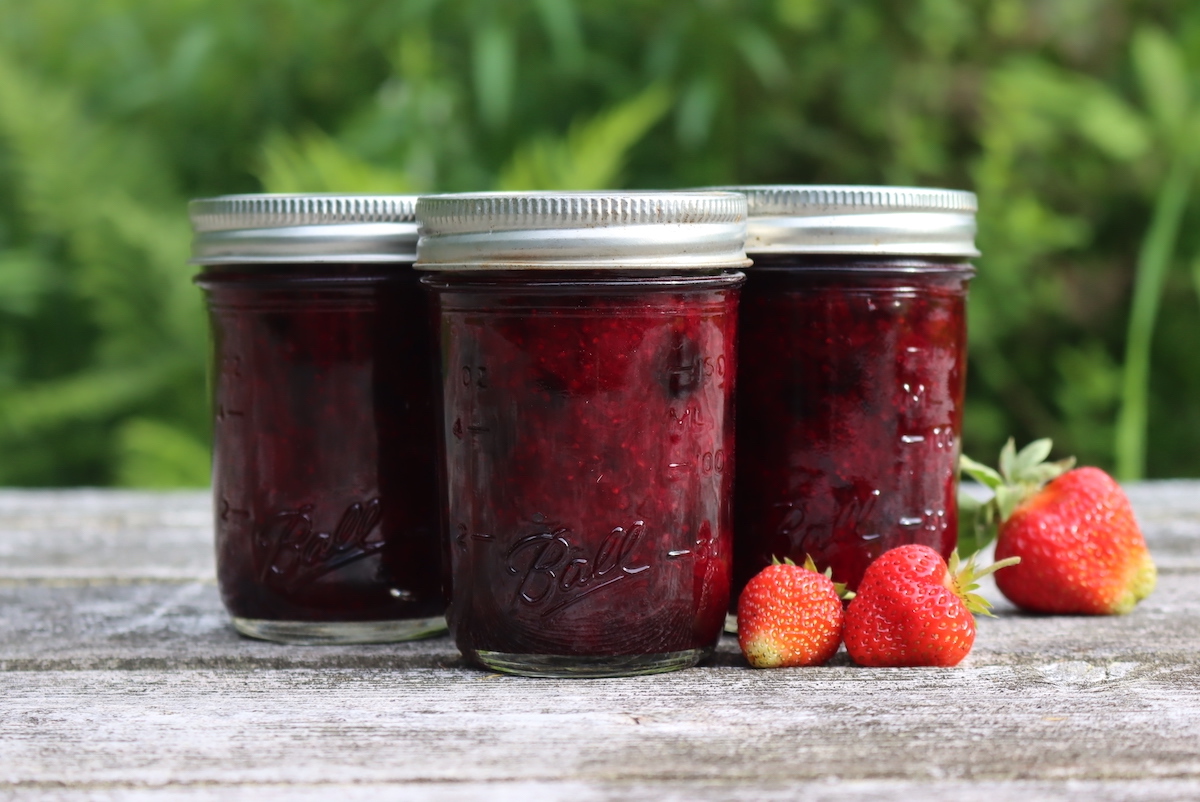
Ways to Preserve Strawberries
Looking for more ways to preserve strawberries?
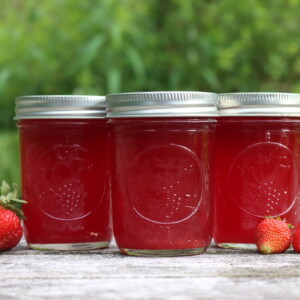
Canning Strawberry Juice
Ingredients
- 1 quart strawberries, fresh or frozen
- 1/2 cup water
- 1 to 2 tbsp sugar, optional
Instructions
Making Strawberry Juice
- Hull and chop strawberries and place them in a pot with water. For every 3 1/4 to 3 1/2 cups of chopped strawberries (from 1 quart fresh), add 1/2 cup of water.
- Bring the strawberries and water to a simmer over medium heat and cook, mashing frequently with a potato masher, until they’ve completely fallen apart and released their juice (about 5 to 10 minutes).
- Strain through a jelly bag or a fine-mesh strainer lined with a double layer of dampened cheesecloth.
Canning Strawberry Juice
- Start by preparing a water bath canner, along with jars, lids, and rings. The canner should be barely simmering (180 F) for a hot pack.
- Heat the strained juice to about 190 degrees F over medium-high heat, but do not boil. Turn down the heat to low and keep the juice at 190 F for 5 minutes. Add sugar and stir to dissolve (if using).
- Ladle the hot juice into prepared jars, leaving 1/4 inch headspace. Apply canning lids and screw-on rings to finger tight.
- Process in a water bath canner for 15 minutes for half-pints, pints, and quarts. Above 6,000 feet in elevation, increase canning time to 20 minutes.
- After the canning time has completed, turn off the heat and leave the jars in the water to cool slightly for 5 more minutes (to help prevent siphoning), then use a jar lifter to remove the jars to cool on a towel on the counter.
- Check seals after 24 hours and store any unsealed jars in the refrigerator for immediate use. Properly canned and sealed jars of strawberry juice will maintain peak quality on the pantry shelf for 18+ months. Refrigerate after opening.
Notes
Nutrition
Nutrition information is automatically calculated, so should only be used as an approximation.
Strawberry Canning Recipes
Looking for more ways to preserve strawberries on your pantry shelf?
- Canning strawberries
- Old-fashioned strawberry jam
- Strawberry jelly
- Canning Strawberry Pie Filling
- Strawberry Rhubarb Jam
Juice Canning Recipes
Strawberry juice isn’t the only juice you can preserve at home!
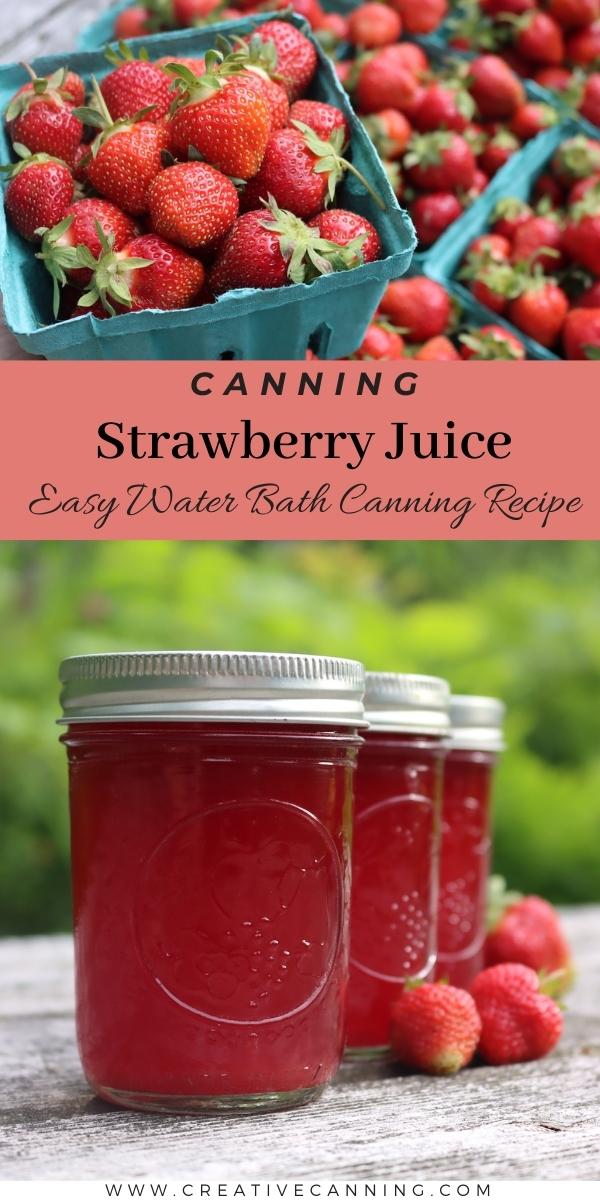

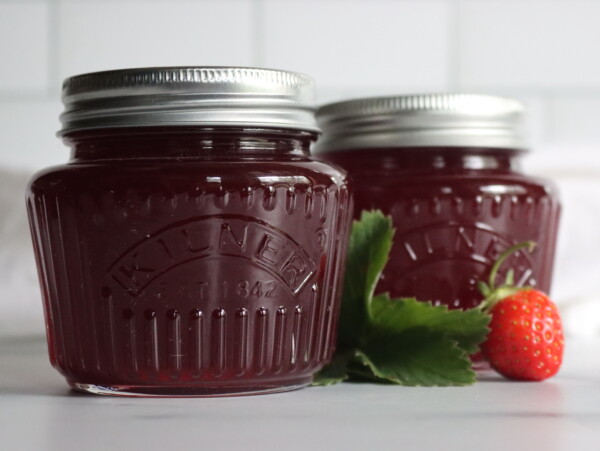
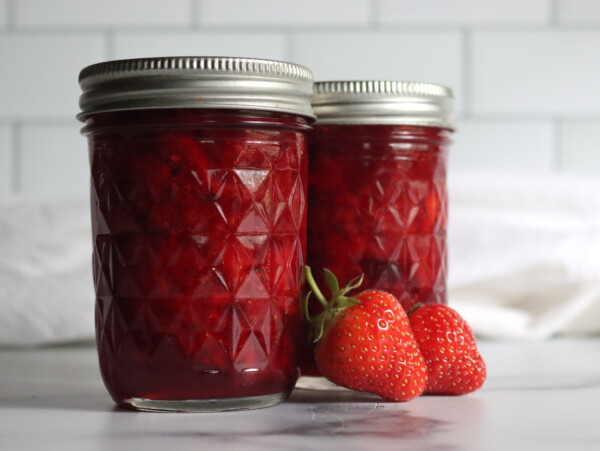
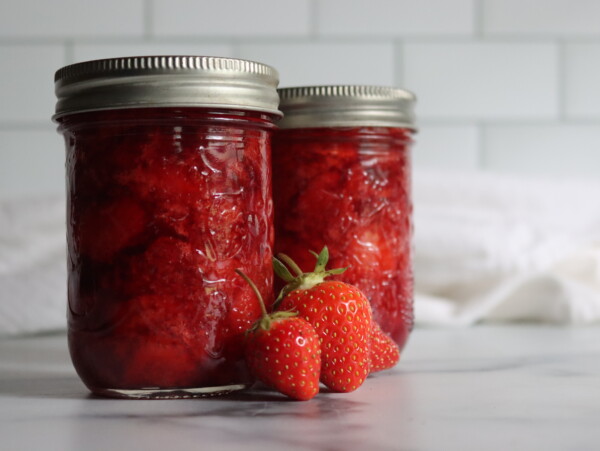
This is delicious! I’m new to canning and this was one of the first things I tried. I’ve made 3 batches and each time I get 5 pints (plus 1/2 pint +/-) per batch instead of 7. Can you share how many cups the pureed strawberries should yield?
Thank you for sharing the recipe and thanks for your help!
The yield here can be a bit variable, depending on the type of strawberries you’re using. I use homegrown fruit that’s the extra soft/juicy heirloom berries which more or less fall apart 24 hours after picking. There’s not much structure to them, and they’re very juicy. I’d guess that causes the higher yield as compared to firmer commercial fruit.